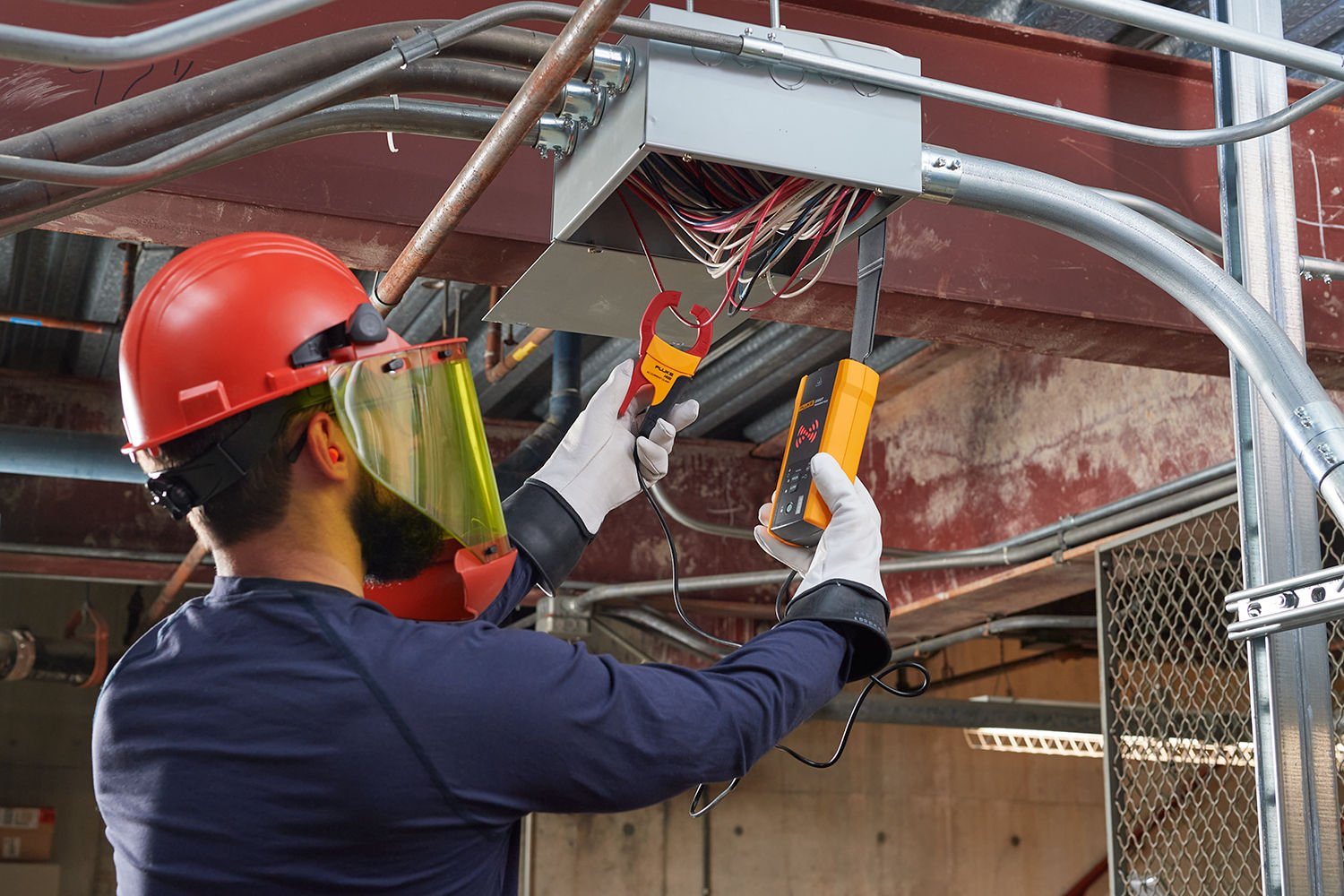Wiring runs behind walls, under floors, through conduits, in ceilings, most often in spaces where electricians cannot go. When you’re troubleshooting problems like breaks or shorts, you don’t have time for guesswork — you want to locate the fault quickly, diagnose the issue accurately, and correct it safely. A professional-grade wire tracer is designed to do exactly that in residential, commercial, and industrial environments.

How a wire tracer finds wiring
Electricians use a wire tracer to locate wires and identify circuits and breakers without having to put unnecessary holes in walls or waste time guessing to find the correct wire in a bundle or run.
A wire tracer has two parts:
- a transmitter, which generates a signal and sends it along the wire
- a receiver, which detects the signal in AC or DC current
In addition, you can use accessories such as a current clamp or test leads to transmit a signal when you have access to or can make direct contact with the wiring you want to trace.
An advanced wire tracer can trace wiring actively on energized or de-energized lines using both the transmitter and receiver. It helps you find a wire’s exact route and direction behind a wall, floor, or ceiling, or around a corner. Using a signal strength scale or visual display, it indicates the wire’s position and helps you precisely locate faults like opens and shorts.
The wire tracer can also passively trace energized lines without having to connect the transmitter, which is safer for you and allows work to proceed without taking critical machinery offline.
Advanced wire tracers have automatic settings that help you take accurate, consistent readings and save time by eliminating false positives.
What to look for in a wire tracer
Some technicians look for wires using more generalized tools like stud finders or do continuity checks with multimeters. The problem with these methods is that they can only approximate wire locations, making them neither efficient nor precise, and they cannot be used on energized wires. In troubleshooting wiring or identifying breakers, wasting time with the wrong tool is wasting your company’s or your customer’s money. When you use a reliable tool designed for the environment where you’re working, your investment will pay off quickly in more efficient work and minimized downtime.
When you choose a wire tracer for your tool kit, look for these features:
- The right category and voltage rating: Residential applications typically need a lower voltage rating, while commercial and industrial sites require a tool that is rated for a higher category and voltage. Advanced wire tracers that can handle commercial/industrial applications will carry a CAT IV 600 V rating to keep you safe from overvoltage spikes that can hit 8000 volts. A tool with a lesser voltage rating could explode in your hands or pass a charge directly into your body, endangering you and anyone nearby.
- Reads energized or de-energized lines: Advanced wire tracers can be used on both energized and de-energized wiring, so you stay safer and can avoid, as much as possible, having to take sensitive or critical equipment offline.
- Practical flexibility: The more you can fine-tune the wire tracer’s settings to fit the tracing scenario in front of you, the better the tool will perform. Being able to select or adjust functions such as transmitter output frequency, transmitter mode, tracing mode, and sensitivity level gives you the flexibility to find the combination that works best.
- Useful accessories: If you are considering a kit, make sure it includes the accessories you will need for a variety of jobs — not just test leads and alligator clips, but outlet adapters (blade and round) and an additional signal clamp.
- Solid support: While their functional principles are clear, setting up an advanced wire tracer is not always intuitive. Look for a tool that has an accessible knowledge base and customer support to answer your questions and help you get the most out of using the tool on your work site.
- Rugged reliability: A wire tracer should be ready to work when and where you are. Look for a tool that is well built, IP rated by a third party, and drop tested for consistent performance under tough conditions. Insist on a reliable warranty from a known manufacturer.
Being able to trace wiring and identify breakers in a panel are key skills that every electrician uses. The right tool — like an advanced wire tracer — can not only help you hone your troubleshooting skills and do the job more effectively, it can also keep you safer as you work.